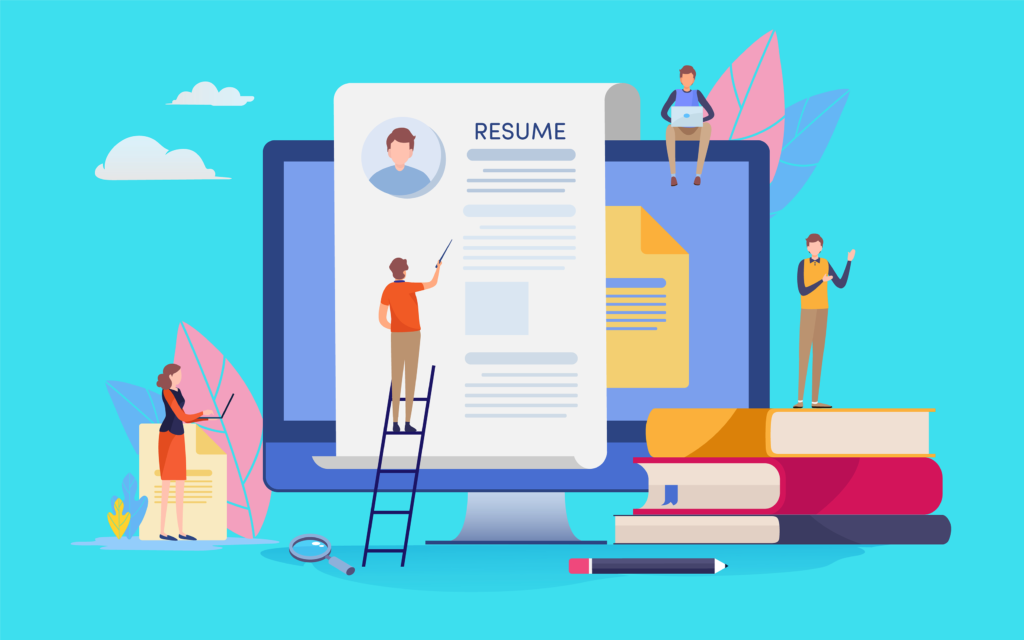
Whether you realize it or not, you should be updating your resume at least twice a year. This is especially true as you gain new skillsets. In addition, every time you apply for a new job, you should update your resume to present the most competitive candidate. Although you may be already showcasing your most current and relevant experience, you should also highlight your goals and aspirations.
Your work history isn’t always the most important part of your resume — any extras, such as professional development can be helpful for a highly competitive role. This is why it’s so important to understand how to best showcase professional development on your resume.
Where should professional development courses go on your resume?
Where to put extras on your resume will largely depend on your work history. If you have a lot of work experience in your desired position or field, then your extras, like professional development or other certifications, should go under that experience.
However, if you don’t have much, or even any, experience in your industry, then you should use professional development, and other educational experiences, to fill out your experience column. This is a great way to minimize the white space on your resume meaningfully and get recruiters to engage in the actual content of your resume.
It should be noted that the average recruiter spends six to seven seconds per resume, so you want your resume to be neat, easy to read, and the information to be concise and thoughtful.
How to include professional development courses on your resume
Since recruiters only spend a handful of seconds looking at your resume, you must make the most out of this time. Understanding not only what to include, but how to include it on your resume can give you a competitive edge by making a lasting impression on recruiters.
Be critical about what you include
Not every job or course that you’ve ever taken should have space on your resume. According to Indeed, your resume should only be one page in its entirety. Your resume should only exceed this length if you have over 10 years of experience in your field. For everyone else, this means you need to be critical about what you include. When asking yourself if the information on your resume is pertinent, try these questions:
- What does this information communicate about my experience?
- Are the skills gained from this experience relevant to the job title/industry I’m applying to?
- Will I have to omit other information to include this experience?
These guiding questions can help you find what is truly important to include on your resume and even help you edit critical information.
Tailor the experience
For each position or company you apply to, you’ll want to tailor your experiences. This can be a simple, easy way to get the most out of your application. You can tailor the experience on your resume, particularly your educational experiences like professional development, by using keywords found in the job posting to highlight why your experience is relevant.
For example, using the exact terms listed in the postings under required experience or job responsibilities can be a great way to call a recruiter’s attention, and demonstrate the value of your experience.
Stay up-to-date
Courses that are dated may not carry the same weight as the latest courses, particularly in high-speed industries like healthcare or IT. This is why it’s important to continue professional development throughout your career.
If you have a significant gap in experience, it may be helpful to include a disclaimer in your resume, explaining this gap in one or two sentences at maximum. For example, if you took time off of work or school to care for a sick family member, or raise a family, this would be pertinent information to relay.
Other ways to use professional development course resources
Professional development courses hold a wealth of utility, not just for job experience, but for your resume as well. Particularly for students or recent graduates, leveraging the different resources that you’ve gained from these courses can help fill out your resume in a meaningful way.
Use classwork samples
Classwork samples can be great for showing off your experience doing similar work that a job title may ask of you. If a job application requests work samples or provides the option for you to include supplemental materials, including examples of your work can be a great way to show, rather than tell, your skills.
Be sure to clearly label any materials as educational, as recruiters treat these differently than professional samples and it’s important to be transparent.
Describe experiences in a cover letter
Cover letters are another commonly requested part of an application, particularly for higher-level jobs. While your resume showcases your skills, your cover letter is to describe the things you’ve learned from these skills and the specific value you can bring to a role.
If you have a lot of work experience on your resume, your cover letter can be a great place to go more in-depth about your extras, like professional development.
Your professional development class doesn’t stop being of use to you when you finish the course or complete the certification. Leveraging the experience on your professional resume or cover letter can help you get the most value for your dollar, as well as help you achieve your career aspirations.
